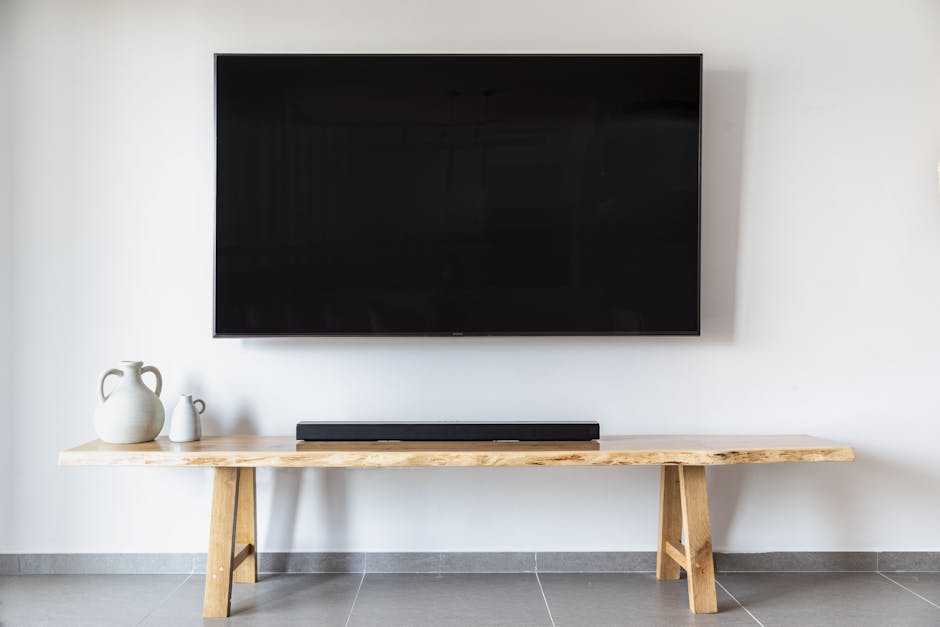Are you tired of your TV’s weak, tinny audio? Do dialogue-heavy scenes leave you straining to hear? Upgrading your audio experience doesn’t have to be complicated or expensive. A soundbar can dramatically improve your TV’s sound quality, immersing you in movies, shows, and games like never before. But with so many options on the market, choosing the right soundbar can feel overwhelming. This guide will provide you with 10 crucial clues to help you navigate the soundbar landscape and select the perfect one for your entertainment setup.

Size and Room Acoustics
Matching the Soundbar to Your Space
Consider the size of your room and the placement of your TV. A large soundbar might overwhelm a small space, while a compact one might not deliver sufficient audio for a larger room. Measure the width of your TV and choose a soundbar that is proportionally sized. For larger rooms, consider a soundbar with a separate subwoofer for enhanced bass response.
Room acoustics also play a vital role. Rooms with hard surfaces like tile or hardwood floors can cause sound to reflect, leading to a distorted listening experience. Soundbars with features like room correction can help mitigate these issues by analyzing your room’s acoustics and adjusting the audio output accordingly. Adding rugs or curtains can also improve sound absorption.
Think about the placement of the soundbar. Will it be placed on a stand in front of the TV, or mounted on the wall? Some soundbars are designed specifically for wall mounting and come with the necessary hardware. Ensure the chosen placement won’t obstruct the TV’s remote sensor.
Considering the Subwoofer
A subwoofer adds depth and impact to low-frequency sounds, enhancing the cinematic experience. If you enjoy action movies or bass-heavy music, a soundbar with a subwoofer is a must. Subwoofers come in various sizes and configurations. Wireless subwoofers offer greater placement flexibility, while wired subwoofers generally provide a more stable connection.
Consider the size of your room and your personal preferences when choosing a subwoofer. A larger subwoofer will produce more powerful bass, but it might be overkill for a small room. Some soundbars allow you to adjust the subwoofer level, giving you greater control over the bass response.
Placement of the subwoofer is also important for optimal performance. Experiment with different locations to find the spot that delivers the best bass response in your room. Avoid placing the subwoofer in a corner, as this can cause the bass to sound boomy and distorted.
Connectivity and Features
Exploring Connection Options
Ensure the soundbar is compatible with your TV and other devices. HDMI ARC (Audio Return Channel) is the preferred connection method, as it allows you to control the soundbar’s volume with your TV remote. Optical and auxiliary inputs are also common, but they offer less functionality than HDMI ARC. Bluetooth connectivity enables you to stream music wirelessly from your smartphone or tablet.
Consider the number of inputs and outputs you need. If you plan to connect multiple devices to the soundbar, such as a gaming console or Blu-ray player, choose a model with sufficient inputs. Some soundbars also offer USB ports for playing music from external storage devices.
Look for soundbars with advanced audio technologies like Dolby Atmos and DTS:X for a more immersive surround sound experience. These technologies add height channels to the audio, creating a more realistic and three-dimensional soundscape.
Smart Features and Voice Control
Some soundbars offer smart features like built-in Wi-Fi and streaming services. This allows you to access music, podcasts, and other online content directly from the soundbar without needing to connect another device. Voice control integration with assistants like Alexa or Google Assistant adds another layer of convenience.
Consider the user interface and remote control. A well-designed interface and intuitive remote control make it easy to navigate menus and adjust settings. Some soundbars offer mobile apps that provide additional control options and customization features.
Look for features like night mode, which reduces the dynamic range of the audio, making it easier to hear dialogue without disturbing others. Dialogue enhancement features can also improve the clarity of speech in movies and TV shows.
Budget and Brand Reputation
Setting a Realistic Budget
Soundbars are available at a wide range of price points, from budget-friendly models to high-end systems. Set a realistic budget before you start shopping and stick to it. Consider how often you’ll use the soundbar and what features are most important to you. A basic soundbar can significantly improve your TV’s audio for a relatively low cost.
Research different brands and read reviews to get a sense of the quality and performance of different models. Look for brands with a good reputation for producing reliable and high-performing audio equipment.
Consider the warranty and customer support offered by the manufacturer. A longer warranty provides peace of mind, knowing that you’re covered in case of any defects or malfunctions. Good customer support can be invaluable if you need help setting up or troubleshooting your soundbar.
Researching Brands and Reviews
Don’t just rely on marketing materials. Read independent reviews from reputable sources to get an unbiased perspective on the performance and features of different soundbars. Look for reviews that focus on the specific aspects that are important to you, such as sound quality, ease of use, and connectivity.
Compare prices from different retailers to ensure you’re getting the best deal. Online retailers often offer lower prices than brick-and-mortar stores. Check for sales and discounts before making your purchase.
Consider the long-term value of the soundbar. A more expensive soundbar might offer better performance and features, but it might not be worth the extra cost if you’re only going to use it occasionally. Choose a soundbar that offers the best balance of performance, features, and price for your needs.
By considering these clues, you can confidently choose the right soundbar that elevates your TV viewing experience and transforms your living room into a home theater.

Leave a Reply